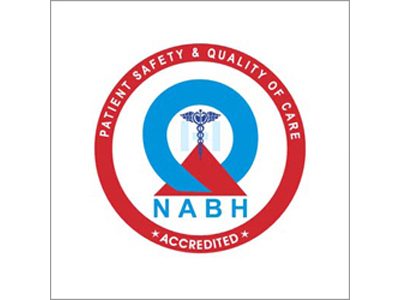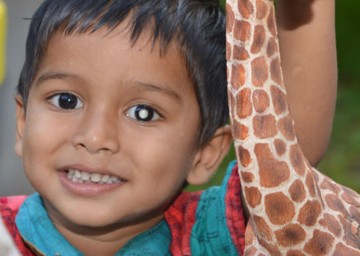Delayed treatment can cause retinoblastoma to spread outside the eyeball. In a new study, Drs. Swathi Kaliki and Vijitha S. Vempuluru from LVPEI, along with the Global Retinoblastoma Study Group, assess the impact of extraocular tumor extension on the treatment and outcomes of retinoblastoma.
Retinoblastoma is an eye cancer that affects children, often two years old or younger, and is the leading cause of death from eye cancers. In retinoblastoma, a malignant tumor develops in the retina, the innermost layer of the eye. A child’s likelihood of surviving retinoblastoma hinges on early detection and access to specialized treatment. Both factors are dependent on the income level of the nation the child is born in. In fact, 99% of children with retinoblastoma survive in high-income countries. However, 43-56% of children with this cancer die in low-income nations due to delayed, or missing, treatment.
Without early detection and treatment, the tumor spreads outside the eyeball and into the optic nerve and other adjacent structures—a condition known as ‘retinoblastoma with extraocular tumor extension’ (RB-EOE). Most such severe cases are found in low- and lower-middle-income countries (LMICs). RB-EOE requires multimodal treatment—surgery, chemotherapy, radiotherapy—access to which is often lacking in low- and middle-income nations. Many countries are in no place to offer the comprehensive care that is necessary to tackle RB-EOE. Little is known about the treatment outcomes of RB-EOE and how this severe form compares to Retinoblastoma confined to the eye. This understanding will help support LMICs in tackling the condition.
In a new study published in the journal Ophthalmology Science, Drs. Swathi Kaliki and Vijitha S. Vempuluru from LVPEI, as part of the Global Retinoblastoma Study Group, compared the treatment and outcomes of children with RB-EOE to those with Retinoblastoma without EOE (RB-w/o-EOE). The group had previously described the presentation and outcomes of retinoblastoma in Asia. The current study included 3,435 children with retinoblastoma from across the world. Among the total, 319 (9.3%) children had RB-EOE. The overwhelming majority of children with RB-EOE (92%) were from low- and middle-income countries, showing an inverse relationship between national income and percentage of RB-EOE.
RB-EOE had significantly higher metastasis (8 times more) and metastasis-related deaths (10.5 times more) compared to RB-w/o-EOE. The researchers found a 28% chance of metastasis and a 57% chance of death from metastasis in the first year alone. In fact, 63% of children with RB-EOE included in the study, died from metastasis. The risk of death from RB-EOE depends on age and treatment modalities. Children older than 4 years are at a higher risk than those younger than 2 years. Unimodal (either surgery or chemotherapy) and bimodal (surgery and chemotherapy) treatment were associated with a higher risk of death than trimodal treatment (surgery, chemotherapy, and radiotherapy). In short, early screening for eye cancers and a trimodal treatment strategy are crucial for minimizing the risk of death in RB-EOE.
‘This data highlights the necessity of trimodal treatment (surgery, chemotherapy, and radiotherapy) for addressing retinoblastoma that has spread beyond the eye,’ comments Dr. Swathi Kaliki, head of the Operation Eyesight Universal Institute for Eye Cancer at LVPEI and the corresponding author of the paper. ‘Unfortunately, these treatment options are not accessible or available in all countries, making the management of such cases difficult. While ongoing efforts aim to detect retinoblastoma at earlier stages, it is equally crucial for health authorities to explore ways to ensure that all treatment options are available to patients with advanced retinoblastoma.’
Citation
Kaliki, S., Vempuluru, V. S., Fabian, I. D., & Global Retinoblastoma Study Group (2024). Retinoblastoma with and without Extraocular Tumor Extension: A Global Comparative Study of 3435 Patients. Ophthalmology Science, 5(2), 100637. https://doi.org/10.1016/j.xops.2024.100637
Photo credit: LVPEI.



